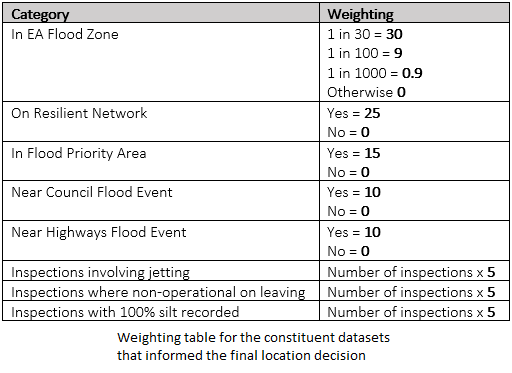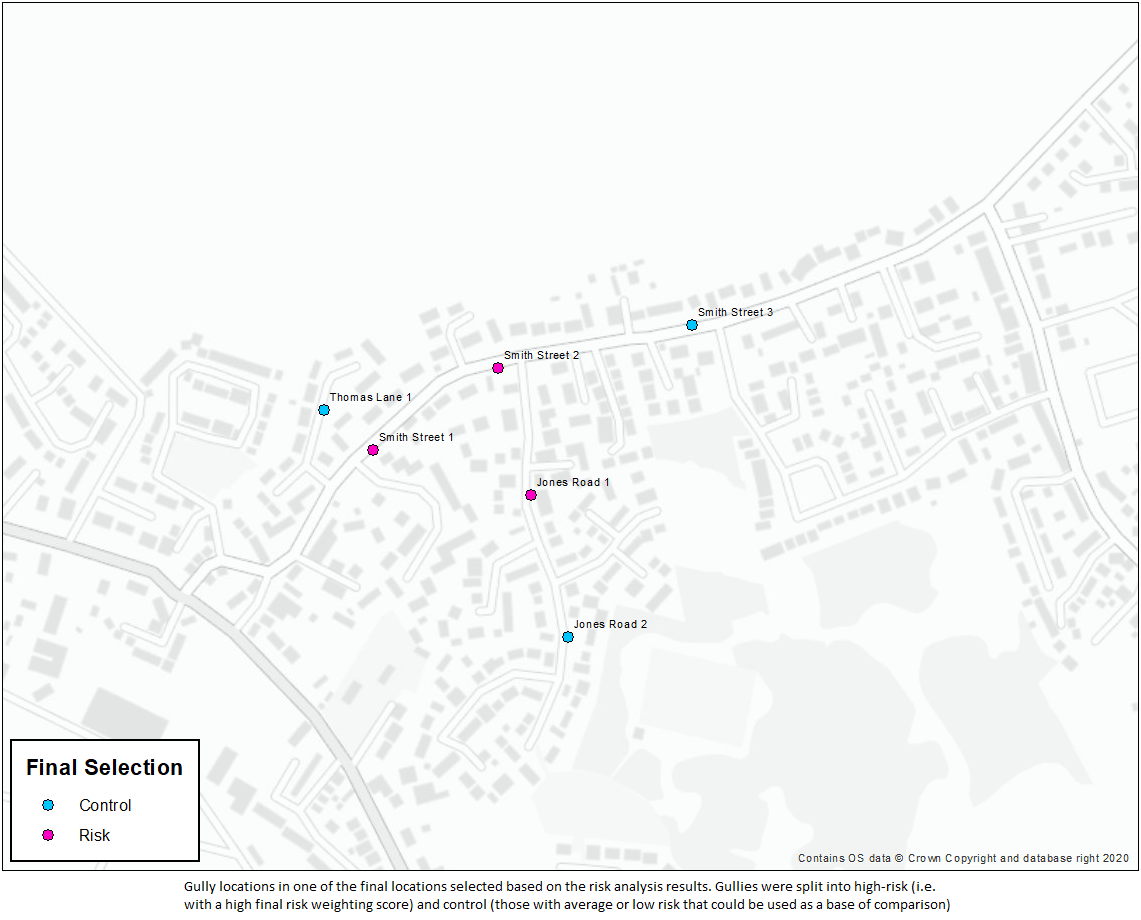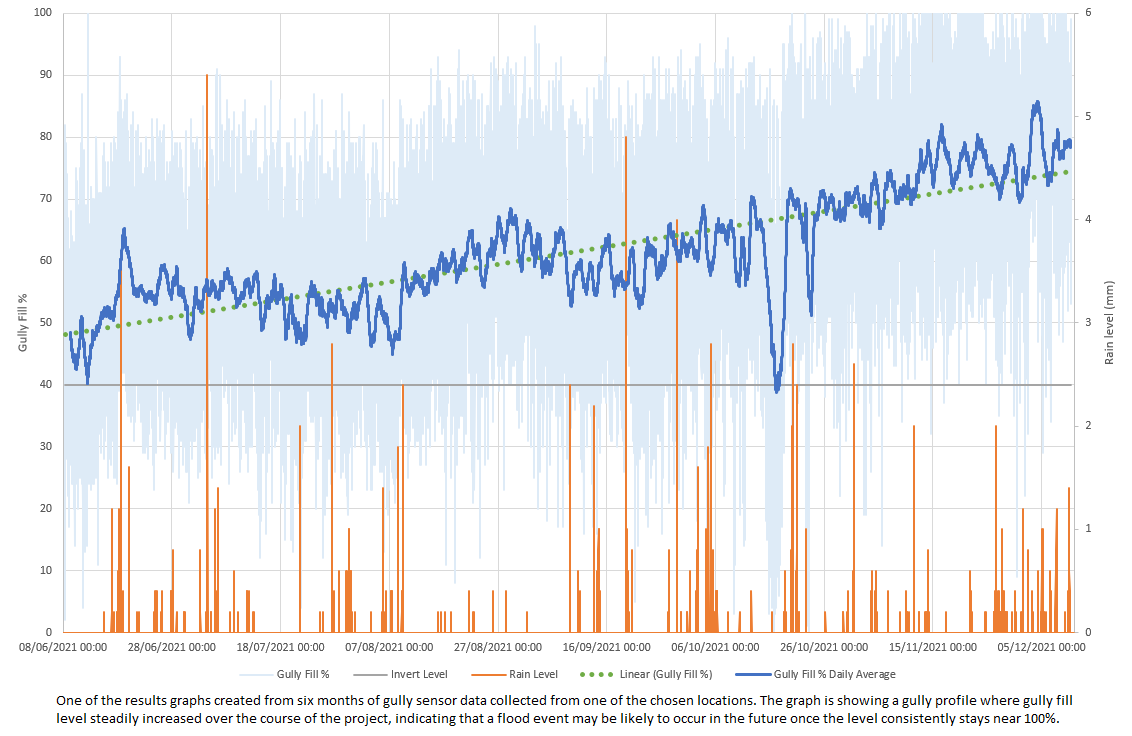Gully Sensor Project
Note: Identifiable information has been removed and any figures have been changed to retain anonymity
A large exploratory project I worked on at KaarbonTech involved the installation and assessment of gully sensors within the drainage network of a Local Authority to determine their long-term suitability for providing real-time water level data for use in flood risk warning and cyclical cleanse decision-making. For the project I undertook a weighted risk analysis across the full gully network to determine the optimal locations to install the trial sensors. I then gathered and analysed several months’ worth of data to get real-world insight on how best to use the sensors, including optimal conditions for installation, pre-installation requirements and suitability of installation in a variety of locations.
The location analysis phase involved me creating a weighted risk model to determine the most at-risk gullies within the drainage network that would most benefit from close monitoring by sensors. I compiled and weighted several risk datasets including Environment Agency flood risk zones, flood priority areas, past inspection history, historic flood data and information about the council’s resilient network. From these, I determined a risk value for each gully, with a higher score indicating a gully at higher risk of a catastrophic flood event. Further information such as traffic management requirements, rainfall gauge proximity, soil type and internet coverage were cross referenced against selected candidate gullies until a final selection of 50 were chosen.
After installation, I collated six months worth of data from the sensors before visualising it on graphs showing gully fill level over time, along with corresponding local rainfall data from the Environment Agency. I analysed these graphs and from this, was able to categorise the gullies into several profiles depending on their performance. I then analysed the characteristics of the gullies and their results to understand what makes a gully suitable for sensor installation, how the various variables (soil type, distance to outfall etc.) affected the results and how suitable gully sensors are for long-term use.


